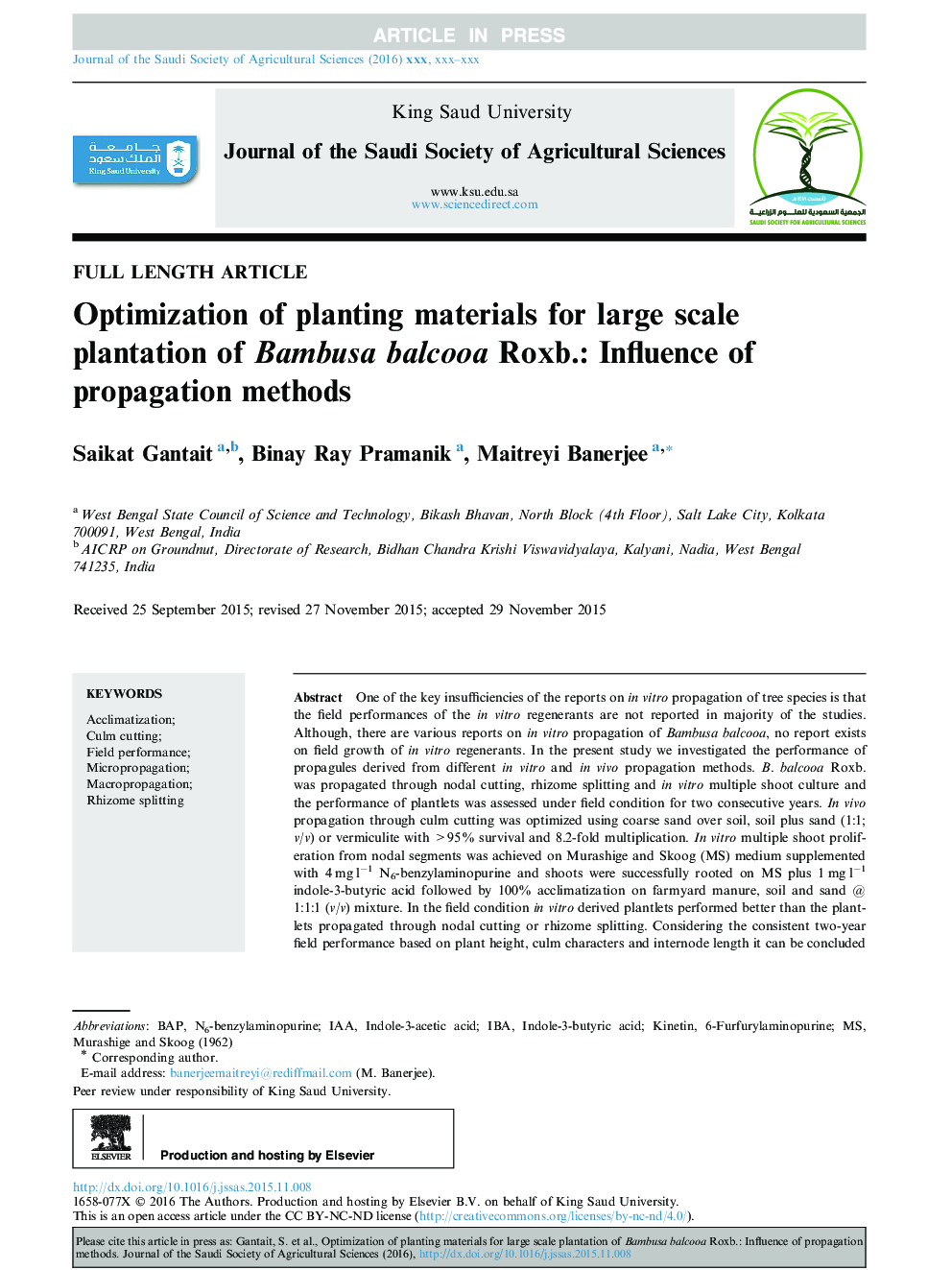| Article ID | Journal | Published Year | Pages | File Type |
|---|---|---|---|---|
| 8876353 | Journal of the Saudi Society of Agricultural Sciences | 2018 | 9 Pages |
Abstract
One of the key insufficiencies of the reports on in vitro propagation of tree species is that the field performances of the in vitro regenerants are not reported in majority of the studies. Although, there are various reports on in vitro propagation of Bambusa balcooa, no report exists on field growth of in vitro regenerants. In the present study we investigated the performance of propagules derived from different in vitro and in vivo propagation methods. B. balcooa Roxb. was propagated through nodal cutting, rhizome splitting and in vitro multiple shoot culture and the performance of plantlets was assessed under field condition for two consecutive years. In vivo propagation through culm cutting was optimized using coarse sand over soil, soil plus sand (1:1; v/v) or vermiculite with >95% survival and 8.2-fold multiplication. In vitro multiple shoot proliferation from nodal segments was achieved on Murashige and Skoog (MS) medium supplemented with 4 mg lâ1 N6-benzylaminopurine and shoots were successfully rooted on MS plus 1 mg lâ1 indole-3-butyric acid followed by 100% acclimatization on farmyard manure, soil and sand @ 1:1:1 (v/v) mixture. In the field condition in vitro derived plantlets performed better than the plantlets propagated through nodal cutting or rhizome splitting. Considering the consistent two-year field performance based on plant height, culm characters and internode length it can be concluded that in vitro propagation method would be a better choice instead of in vivo nodal cutting or rhizome splitting techniques for large scale plantation of B. balcooa Roxb.
Keywords
Related Topics
Life Sciences
Agricultural and Biological Sciences
Agricultural and Biological Sciences (General)
Authors
Saikat Gantait, Binay Ray Pramanik, Maitreyi Banerjee,
